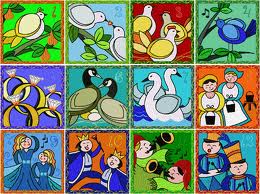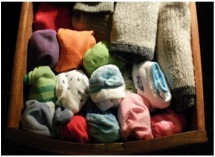 We have a big break coming up at the end of November! Many families will celebrate Thanksgiving. Just about everyone will get together with relatives and maybe some friends. Find out what your family is planning. Are you having a big celebration at your house on Thanksgiving? Are you going to a relative’s house on Thanksgiving? Are you going out to eat somewhere? Are you going to a friend’s house on Thanksgiving? Figure out (ask parents to help) how many people in total do you expect to be there. Make sure to include all brothers, sisters, parents, aunts, uncles, cousins, grandparents, friends of the family [FOF], and anyone else. How many of them are male? How many are female? How many are age 10 and under? How many are 11 and older? How many live in the state of Maryland? How many live outside the state of Maryland?
We have a big break coming up at the end of November! Many families will celebrate Thanksgiving. Just about everyone will get together with relatives and maybe some friends. Find out what your family is planning. Are you having a big celebration at your house on Thanksgiving? Are you going to a relative’s house on Thanksgiving? Are you going out to eat somewhere? Are you going to a friend’s house on Thanksgiving? Figure out (ask parents to help) how many people in total do you expect to be there. Make sure to include all brothers, sisters, parents, aunts, uncles, cousins, grandparents, friends of the family [FOF], and anyone else. How many of them are male? How many are female? How many are age 10 and under? How many are 11 and older? How many live in the state of Maryland? How many live outside the state of Maryland?
Record all the information below first as a fraction [11/20 for females would mean that 11 of the 20 people coming are female], then as a decimal [so 11/20 would = 0.55], then as a percent [11/20 = 55%]. Remember you can use keyboard shortcuts to copy the following and paste it into your answer. Then you just need to write the fractions, decimals and percents.
Males:
Females:
Brothers:
Sisters:
Parents:
Aunts:
Uncles:
Cousins:
Grandparents:
Friends of the family [FOF]:
Age 10 or under:
Age 11 or older:
Live in the state of Maryland:
Live outside the state of Maryland:
Bonus A:
Add another category or two (or several) of your choice. Be creative [how many have x-box’s, iPads, been to Disney World – anything you can think of!]
Bonus B:
What is your highest fraction/decimal/percent? What is your lowest? What is the median fraction? What is the mean decimal? (Might want to use a calculator for that one.) What is the range of your fractions or decimals?
 Example: It takes me 2 hours to cover the 120 miles to grandma’s house. So, I am traveling at 60 miles per hour.
Example: It takes me 2 hours to cover the 120 miles to grandma’s house. So, I am traveling at 60 miles per hour.






